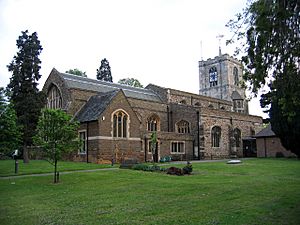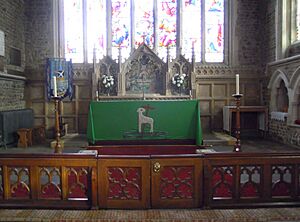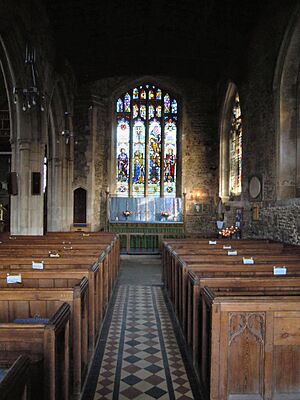Church of St Andrew, Biggleswade facts for kids
St Andrew's Church is the main Anglican church for the town of Biggleswade in Bedfordshire, England. It is a very old and important building, listed as Grade II*. This means it's a special historic building. The church is well-known for a unique brass picture from 1481. This picture shows a "Figure of Death."
Church History
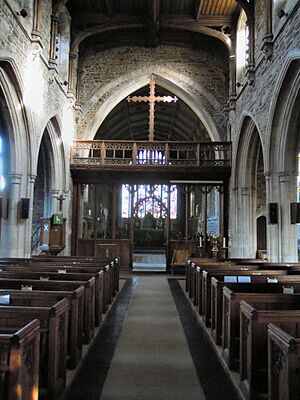
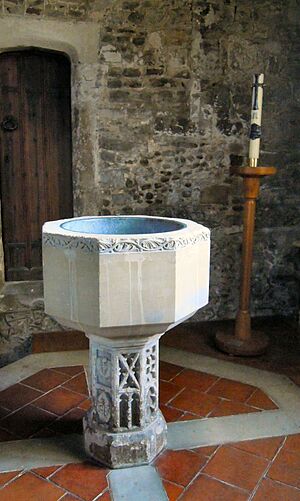
St Andrew's Church was first mentioned in records way back in 1132. This was when the land of Biggleswade was given to the Bishop of Lincoln. Around 1163, Bishop Robert de Chesney made the church a "Royal Peculiar." This meant it had a special status, not fully under the local bishop.
A famous event happened at the church on November 18, 1200. Hugh, Bishop of Lincoln, died in London. His body rested at Biggleswade on its way to Lincoln. It is said that a woman with a broken arm touched his body and was healed. The candles in the procession also stayed lit. St Hugh later became a saint in 1220.
None of the church building you see today is from that very early time. The oldest parts are from around 1300. Most of the church was built in a style called the "Perpendicular Period." The main part of the church, called the chancel, was likely rebuilt between 1467 and 1481. This was done by a church leader named John Rudying.
The church's old tower fell down in the early 1700s. It was rebuilt in 1720. In 1870, the church had a big repair project. The roofs and stone parts were fixed. An organ room was added, and new supports were put in for the nave roof.
More improvements were made between 1885 and 1888 by architect William Butterfield. He put a new roof on the chancel and added a new room called a vestry. In November 1953, a fire damaged the chancel and organ room. These parts were repaired between 1953 and 1955. An organ gallery was also added at the church's west end.
Church Design
The church has a tower arch and five doorways that date back to about 1300 AD. The rest of the building is from the "Perpendicular Period," with the chancel dating to around 1470.
On the floor of the chancel, you can still see parts of a special brass picture from 1481. This picture is for John Rudying, who helped rebuild the chancel. It shows a Latin message between Rudying and a "Figure of Death" who is about to strike him. This is the same memorial that was thought to be destroyed during the 1870 repairs. It was described as a very large stone slab in the middle of the chancel.
The inside walls of the church had their plaster removed in the late 1800s. The main area, called the nave, and the side aisles are separated by arches from the Perpendicular Period. At the west end, the tall tower arch is from the earliest tower around 1300. The rest of the church tower is from 1720.
St Andrew's is built from dark ironstone, which is a type of rock. The tower is made of grey ashlar stone on an ironstone base. The church also uses limestone for decorations. The beautiful stained glass in the East window was put in in 1877. Another window in the chancel, showing the Crucifixion, is from 1882. A middle window on the south side of the chancel was made by Charles Eamer Kempe.
The church has been listed as Grade II* since May 20, 1952.
See also
- Monumental brass of John Rudying


